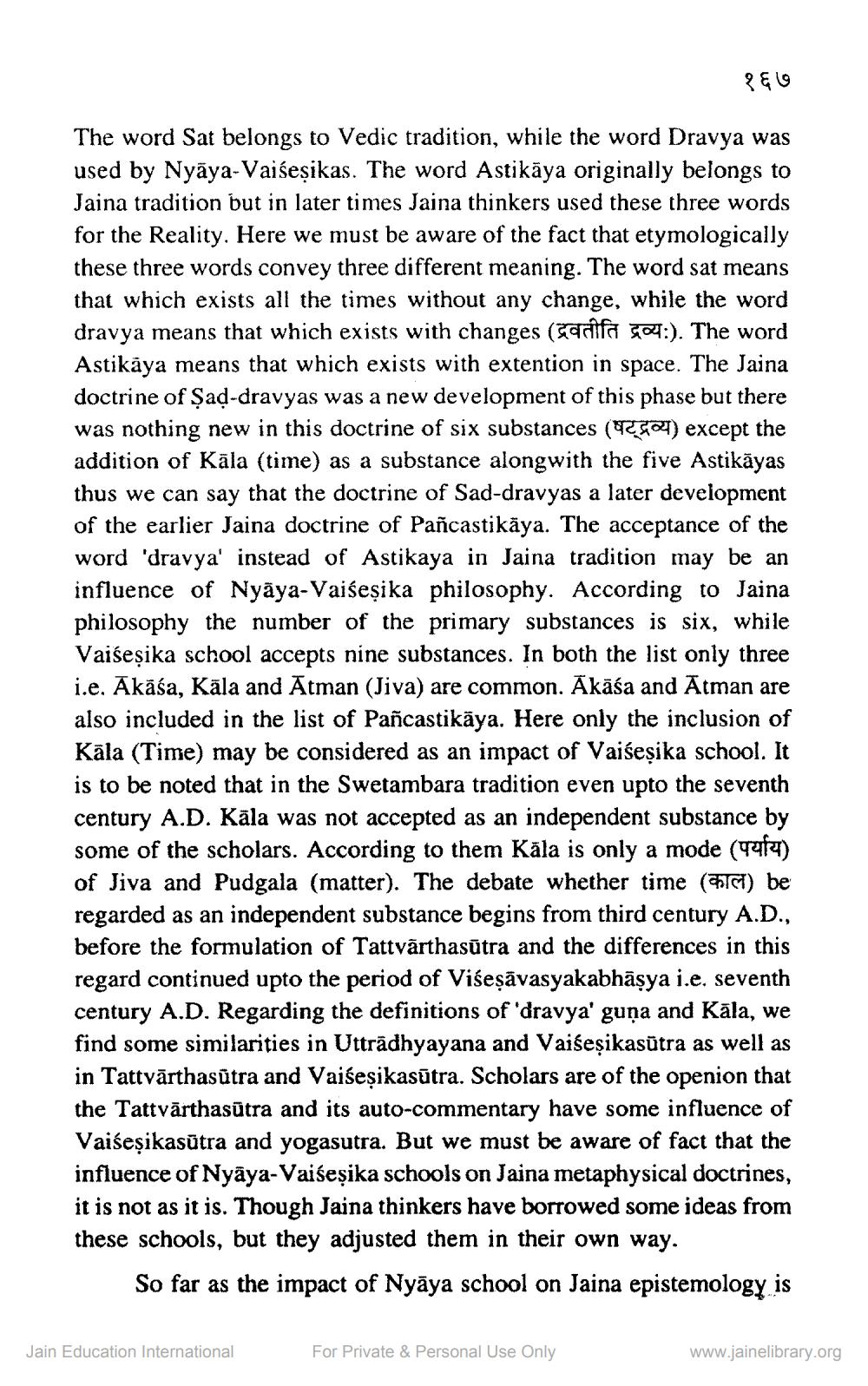________________
१६७
The word Sat belongs to Vedic tradition, while the word Dravya was used by Nyaya-Vaiseṣikas. The word Astikaya originally belongs to Jaina tradition but in later times Jaina thinkers used these three words for the Reality. Here we must be aware of the fact that etymologically these three words convey three different meaning. The word sat means that which exists all the times without any change, while the word dravya means that which exists with changes (fa :). The word Astikaya means that which exists with extention in space. The Jaina doctrine of Sad-dravyas was a new development of this phase but there was nothing new in this doctrine of six substances (2) except the addition of Kāla (time) as a substance alongwith the five Astikāyas thus we can say that the doctrine of Sad-dravyas a later development of the earlier Jaina doctrine of Pañcastikāya. The acceptance of the word 'dravya' instead of Astikaya in Jaina tradition may be an influence of Nyaya-Vaiseṣika philosophy. According to Jaina philosophy the number of the primary substances is six, while Vaiseṣika school accepts nine substances. In both the list only three i.e. Akāśa, Kāla and Atman (Jiva) are common. Ākāśa and Atman are also included in the list of Pañcastikāya. Here only the inclusion of Kāla (Time) may be considered as an impact of Vaiseṣika school. It is to be noted that in the Swetambara tradition even upto the seventh century A.D. Kāla was not accepted as an independent substance by some of the scholars. According to them Kāla is only a mode (4) of Jiva and Pudgala (matter). The debate whether time (c) be regarded as an independent substance begins from third century A.D., before the formulation of Tattvarthasūtra and the differences in this regard continued upto the period of Viseṣāvasyakabhāṣya i.e. seventh century A.D. Regarding the definitions of 'dravya' guṇa and Kāla, we find some similarities in Utträdhyayana and Vaiseṣikasūtra as well as in Tattvärthasūtra and Vaiseṣikasūtra. Scholars are of the openion that the Tattvārthasūtra and its auto-commentary have some influence of Vaiśeşikasūtra and yogasutra. But we must be aware of fact that the influence of Nyaya-Vaiseṣika schools on Jaina metaphysical doctrines, it is not as it is. Though Jaina thinkers have borrowed some ideas from these schools, but they adjusted them in their own way.
So far as the impact of Nyāya school on Jaina epistemology is
Jain Education International
For Private & Personal Use Only
www.jainelibrary.org




